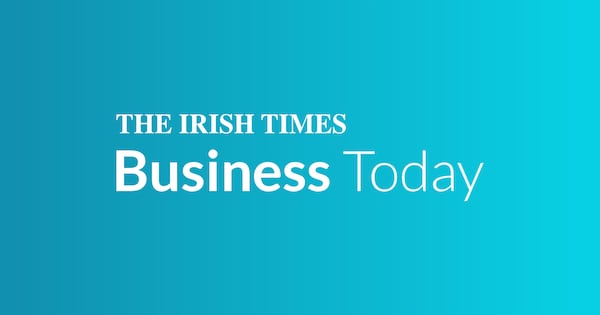Last month, Eli Lilly’s weight-loss drug Mounjaro became India’s top-selling drug, overtaking GSK’s widely used antibiotic Augmentin.
Mounjaro was only launched in India in March, a testimony to the explosive demand for these medications.
Last month it outsold rival weight-loss drug Wegovy (produced by Novo Nordisk) by a ratio of 10 to one.
[ Eli Lilly’s blockbuster weight-loss drugs drive surge in Irish exportsOpens in new window ]
India – with a population of more than 1.4 billion – has become a key battleground in the global weight-loss market. Analysts predict the market could generate €130 billion a year by the end of the decade.
Last IBRC property to be sold and inflation hits highest rate in more than a year
How the seeds of a thriving agricultural business were planted 200 years ago
Why the job ladder matters for migrants and the economy as a whole
‘People like dealing with people’: Reed boss on the challenge of AI in hiring
This little snippet of news and its importance for Ireland went largely unnoticed here.
Eli Lilly manufactures the ingredients for Mounjaro and its diabetes drug Zepbound in Kinsale, Co Cork.
The unprecedented surge in Irish exports this year (exports to the US rose by 153 per cent to €71 billion between January and May) was almost entirely driven by shipments of these ingredients.
Using US customs data, the Irish Fiscal Advisory Council (Ifac) tracked approximately $42.3 billion (€36.4 billion) of this export surge to Indianapolis, where Eli Lilly is headquartered and where it has several big manufacturing sites.
“This spike in exports likely reflects strong US demand for these medicines, along with stockpiling in the US ahead of potential tariff changes,” the council said.
The jump in exports is expected to see the economy here expand by almost 11 per cent in gross domestic product (GDP) terms this year, which is almost certain to make it the fastest-growing advanced economy in the world in 2025.
Despite all the talk of trade barriers and protectionism, we still reside in a globalised trading world, populated by multinational corporations that wield immense power; the power to propel an entire economy to the top of the growth charts.
Ifac’s report highlights the conflicting forces swirling around Ireland’s pharma industry.
On one level, it is in the crosshairs of Donald Trump’s America First agenda. That’s not just because it has exploited anomalies in the US tax law to offshore production (with Ireland a significant beneficiary). It also charges US consumers significantly more for basic medicines, something Trump has pledged to tackle.
Conversely, it is sitting on a potential boom in weight-loss therapies.
Eli Lilly reported stellar third-quarter earnings last month while raising its projected full-year revenue to $63 billion (€54.2 billion) on the back of soaring Mounjaro and Zepound sales.
The company also announced a direct-to-consumer partnership with Walmart, offering customers single-dose vials of Zepbound for under $500 (€430) in its pharmacies.
So far, pharma has escaped US tariffs and Washington has struck deals with industry heavyweights Pfizer and AstraZeneca. This suggests that behind the scenes, the White House is more pragmatic than Trump’s threats.
But as economist (and Irish Times columnist) John FitzGerald said in a recent report, “there remains the threat of further US policy action to either cut US pharmaceutical prices or to force firms to source a greater share of their sales in the US from production in the US”.
Johnson & Johnson, AstraZeneca and Roche have each committed to investing $50 billion in the US while Novartis, GlaxoSmithKline, AbbVie, Gilead, Bristol-Myers Squibb, Sanofi and Eli Lilly have all committed to investing between $10 billion and $40 billion.
China is also rivalling US dominance in the sector.
“China is not simply making generics anymore,” Ifac notes. “It is now developing high-quality biopharmaceuticals more quickly and cheaply than its western counterparts. China has a much smaller pharma footprint in Ireland, relative to the US.”
How all this will play out in an already volatile sector is impossible to say.
Back in 2011, the industry was at a similar crossroads. Twenty blockbuster drugs, including Pfizer’s cholesterol-lowering medication Lipitor and Bristol-Myers Squibb/Sanofi’s blood thinner Plavix, were set to go off patent. They represented over a quarter of global annual sales.
There was serious concern that this so-called patent cliff would damage the Irish economy at a time when it was mired in financial chaos after the 2008 crash.
Predictions that we would see a mass exodus of firms, however, proved ill-founded. Instead, the sector moved more high-end, manufacturing large-molecule drugs or biologics. Twenty-four of the top 25 pharmaceutical companies in the world now have operations here.
Many of these firms manufacture active ingredients for branded medicines, the most profitable stage of drug manufacturing.
Eli Lilly could, in theory, make the ingredients for its weight-loss drugs in the US rather than in Ireland, but moving production would involve a huge commitment of resources and could take years.
It would also involve paying the US’s headline 21 per cent tax rate on profits rather than Ireland’s 12.5 per cent (bumped up to 15 per cent for big multinationals) – something Wall Street shareholders might not be too happy about.
Either way, Ireland’s winning streak on foreign direct investment (FDI) comes with a concentration risk, not just in terms of tax receipts but also in actual exports, as the Eli Lilly example illustrates.
As these firms get bigger and more profitable, Ireland’s concentration risk grows.















